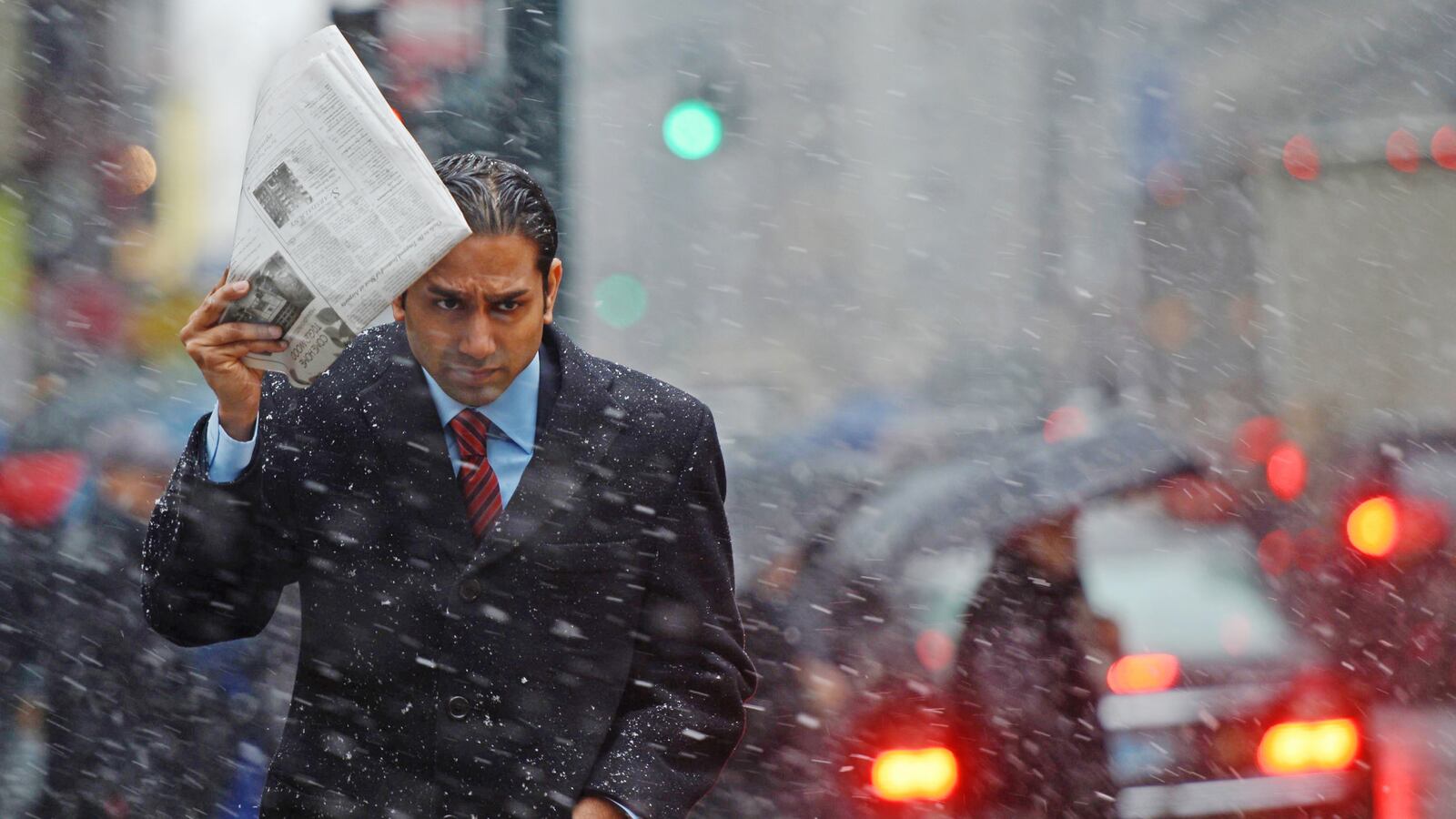Don’t hate Uber because it jacks up prices.
The car-summoning service came in for some criticism over the weekend. Users know that at times of high demand—rush hour, or when it’s raining—prices can easily double during a “surge.” It’s a reflection of supply and demand. But over the weekend—a cold, holiday-season weekend when it was snowing, sleeting, and generally unpleasant to be outside—the surge prices rose to up to 7 and 8 times the usual. Many users cried foul.

They shouldn’t. This is how things work.
In many markets, it is completely accepted that prices rise at times of peak demand—especially when supply is relatively limited. This phenomenon is most pronounced in transport. Ride the train at 8:00 a.m. and you pay a peak price. A few hours later, riders pay a lower off-peak price. It can cost $800 to fly from New York to Florida and back in the last week of December, but only $250 in the middle of August. In the Caribbean, resort prices tend to drop in April or May. On Valentine’s Day, restaurants tend to jack up menu prices, or force people into expensive fixed-price dinners. It is even more pronounced with electricity, where utilities and power generators have expensive plants standing by that are turned on only when demand spikes. On very hot days, the peak price can easily double or triple the usual price.
Before Uber, it worked the same way with car services. In Manhattan, when you couldn’t find a taxi, you could try to hail a moonlighting car-service driver or gypsy cab and negotiate a fare. At 5:00 p.m. on a cold, rainy day, the price demanded would inevitably be higher than it would be at 2:00 p.m. on a nice day.
Now, I find the surge pricing to be one of Uber’s annoying attributes. The few times I’ve tried to use the service—generally around rush hour, when it was raining, in a part of town without a nearby subway stop—surge pricing has been in effect. And I always recoiled. Unwilling to pay $25 or $35 for what is usually a $12 cab ride, I’d take my chances with a taxi, or hop on the bus, or run to the subway station, or use Citibike. Sure, I’d be less comfortable and perhaps get wet. But at that moment in time, I didn’t value the service Uber was offering sufficiently to pay for it.
But think about the other side of the Uber equation: the drivers.
Uber is a great example of what I call “the spare capacity” economy—apps, services, and business models that help people make the most economic use out of resources. AirBnb allows people to rent out spare rooms that aren’t being uses. Lots of companies let computer owners rent out storage and processing power that they aren’t using. RelayRides lets car owners rent their cars to other drivers when they’re not being used. It all makes the economy more productive. And there are others that let people make use of downtime more efficiently.
Uber is a boon to professional car-service drivers, who tend to have a lot of downtime between jobs. Here’s how a driver at the car service I use explained it to me. In a typical day, he has to spend 14 hours on the job to make enough money to cover his overhead and earn a profit. But a lot of that time is spent idling—waiting for a call, or in between jobs. Uber provides him with work during what used to be downtime. As a result, he has reduced his working day to about 10 or 11 hours. That has changed his life.
So during periods of normal demand, Uber delivers a great service to the drivers (who give Uber a healthy chunk of each ride) and to Uber users. The company finds and delivers drivers with spare capacity to them at a pretty low price.
But circumstances can change when demand rises very rapidly at the same time that drivers need significantly higher incentives to get out on the road. And that was the case over the weekend. The snow and sleet discouraged people from driving their own cars, and made them far less likely to wait for a bus, or to walk, or to stand outside hailing a cab. Hence demand for Uber’s services rose. At the same time, drivers could hardly be blamed for wanting to stay at home. Many are inexperienced driving in the snow. It’s dangerous to drive in snowstorms. You could lose control and crash into another car, or another vehicle could crash into you, necessitating expensive repairs. You have to dry very slowly and traffic is easily snarled, which means you could only count on completing a fraction of the number of rides you would in an ordinary evening. So instead of tapping into spare capacity, Uber had to coax new capacity into being. In essence, Uber said, it had to raise prices hugely to convince drivers to take the risk, time and effort to get out on the roads.
The reaction shows how spoiled many of us have become by technology. The internet—and the apps and services built on it—make people feel like they are entitled to get access to anything they want, at any time, at a very low price. And in the virtual world, that makes sense. There’s no reason an iTunes download should cost more on one day than on another. But it’s another story in the real world, which is occupied by human beings with free will, and which is full of friction.
When people use Uber, they are paying people to do something that they don’t want to do themselves. It’s not like the company is running ambulances. Rather, Uber offers people access to one of many modes of transport—with varying costs and trade-offs—that are available. Having been raised in the Midwest, I am always astonished by people who are daunted by snow. Our vehicles and bodies are constructed in such a way that they can move effectively through the substance. So next time it snows, don’t curse Uber. Put on a scarf and mittens, dig out your car, get on your bike, strap on some skis, or head to the subway.






